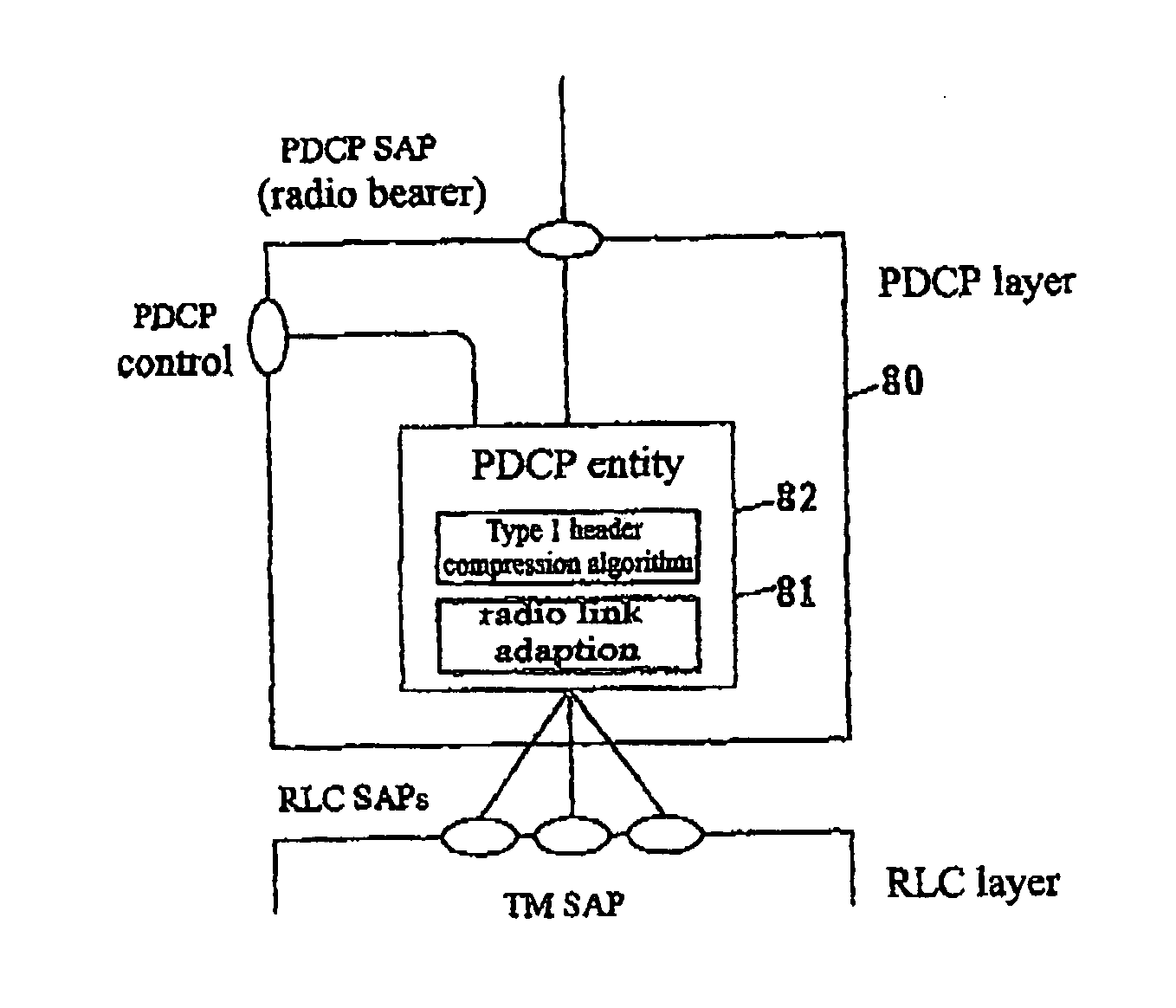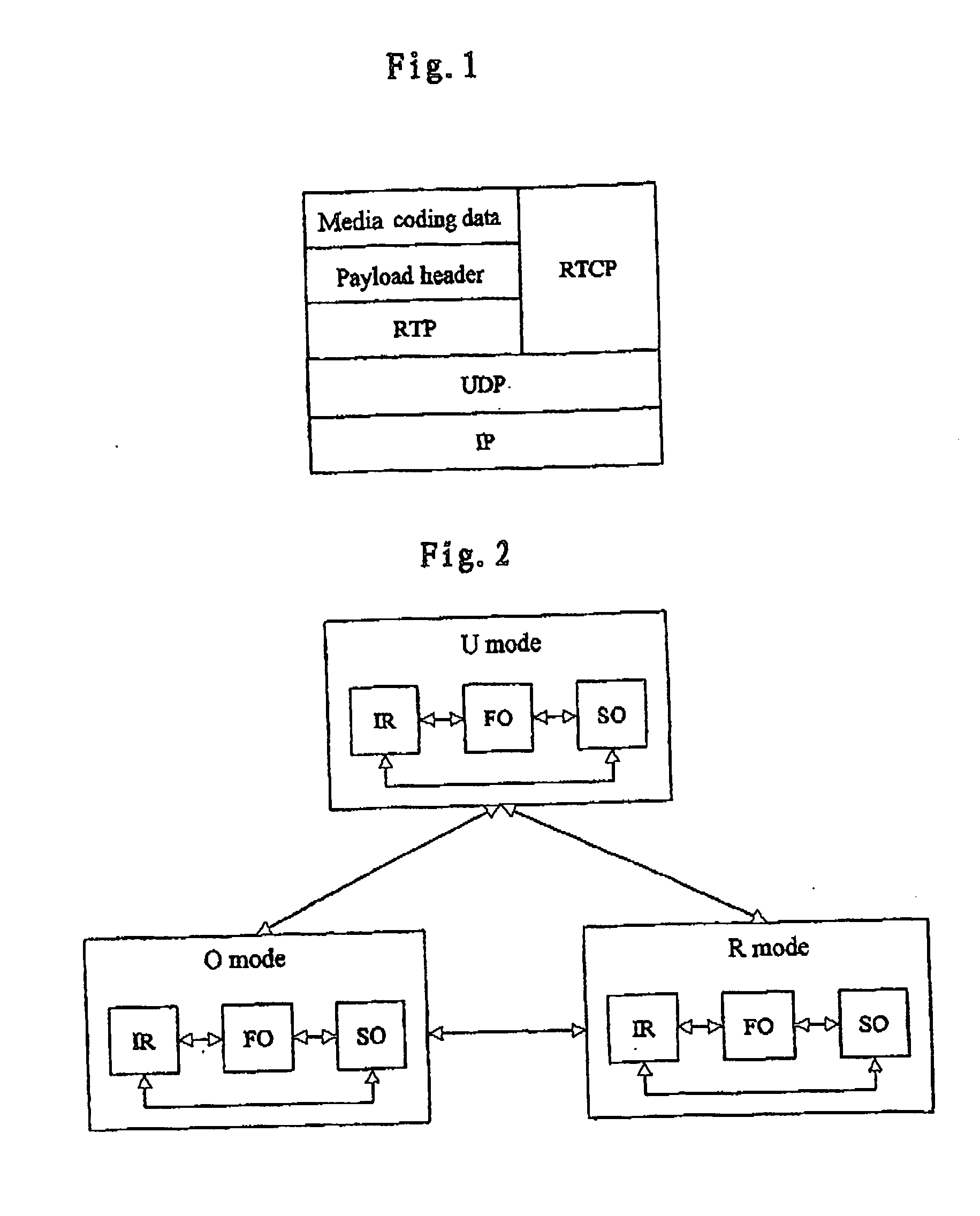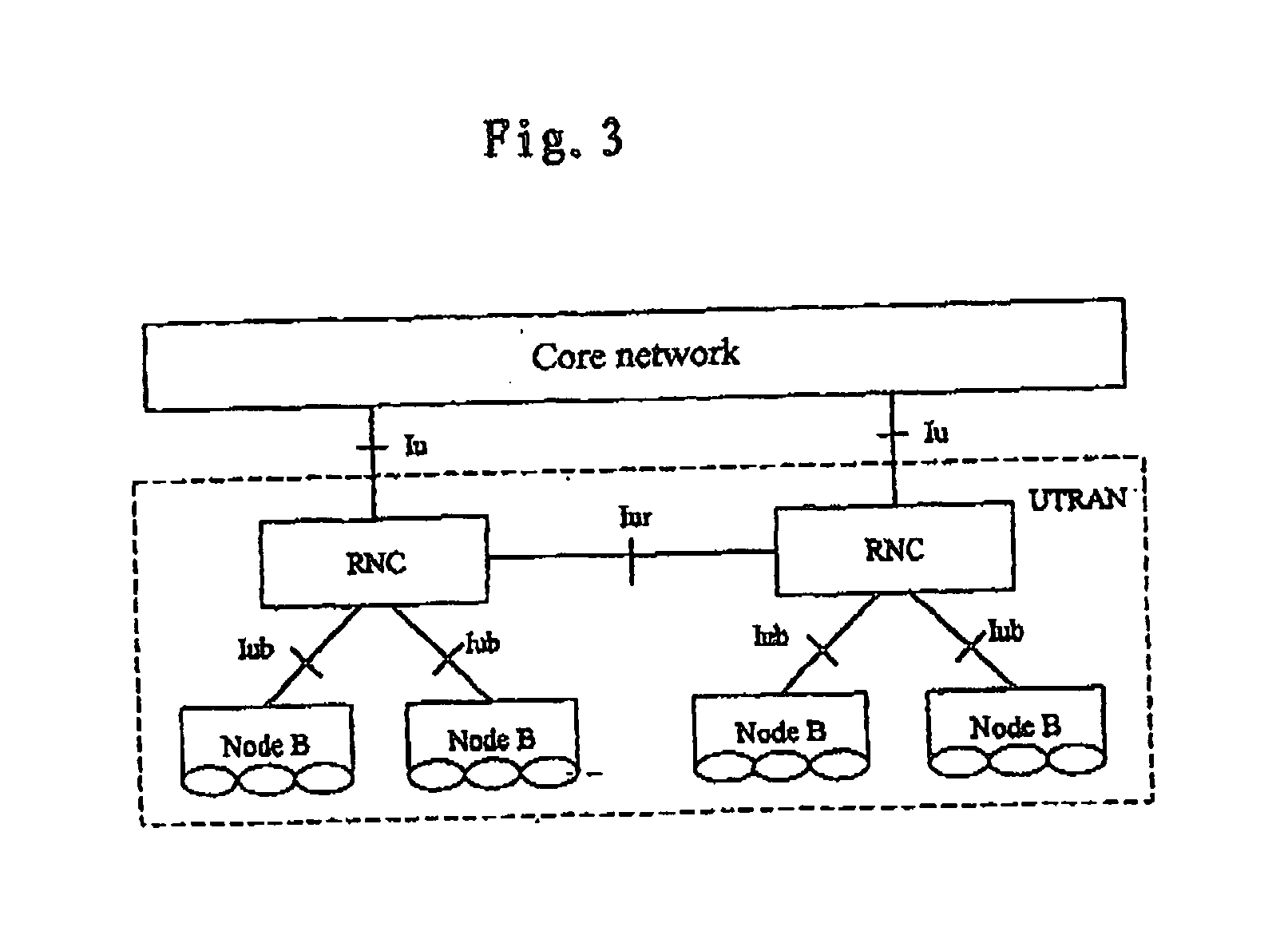Apparatus and Method for Radio Transmission of Real-Time Ip Packets Using Header Compression Technique
a real-time ip packet and header compression technology, applied in the field of packet data convergence protocol (pdcp), can solve the problems of large channel overhead, large reducing channel efficiency of radio interface, and relatively short length of rtp payload, so as to achieve efficient utilization of radio resources and bandwidth, and suitably delay the effect of transmission
- Summary
- Abstract
- Description
- Claims
- Application Information
AI Technical Summary
Benefits of technology
Problems solved by technology
Method used
Image
Examples
second embodiment
[0069] A second embodiment according to the invention will be described below in combination with FIGS. 12-14.
[0070] In the second embodiment, the UEP mechanism that separately transmits the compressed header and the RTP payload is employed. First, in step 1210, at the transmitting end, a header compression unit 1401 header-compresses the RTP packet, then delivers the header compressed packet to a separating unit 1402 of the radio link adaptation unit. The header compression unit 1401 is also responsible for marking the compressed header and the RTP payload of each header-compressed packet. In step 1220, the separating unit 1402 separates the RTP packet coming from the header compression algorithm unit into the compressed header and the RTP payload, based on the marking made by the header compression unit 1401 on the compressed header and the RTP payload, and respectively forms PDCP layer PDUs before mapping them to two different TM mode RLC entities.
[0071] According to a preferabl...
third embodiment
[0075] A third embodiment according to the invention will be described below with reference to FIGS. 15-17.
[0076] The third embodiment relates to such a case that RNC has obtained the RTP payload format information including the RTP payload header and media data bits of different error sensitivities by means of appropriate signalling, and thereby applying non-equal error protection to different data blocks of the RTP payload. In step 1510, at the transmitting end, a header compression unit 1710 header-compresses the RTP packet to form a header-compressed packet, and delivers the header-compressed packet to the radio link adaptation unit. In step 1520, the separating unit 1402 and the block dividing unit 1702 of the radio link adaptation unit cooperate to separate the compressed header from the RTP payload according to the second embodiment, then the block dividing unit 1702 divides the RTP packet from the header compression algorithm unit into blocks of different error sensitivities...
fourth embodiment
[0081] the invention will be described below with reference to FIGS. 18-19.
[0082] The inventor recognizes that, when the RTP / UDP / IP and RTCP / UDP / IP packets of the same type of media data stream are transmitted over the same UMTS bearing channel, it is possible to reduce the instantaneous peak requirement on the radio channel bandwidth by scheduling the transmission of the RTCP packet, so as to efficiently utilize the radio resources and bandwidth. The following will be described by taking the ROHC header compression algorithm as an example. However, those skilled in the art would appreciate that, the present invention uses the compression algorithm to compress the header of the RTP packet, but which compression method is used and how to achieve the compression is irrelevant to the implementation of the invention. Therefore, the present invention is not limited to the ROHC header compression algorithm, but may be adapted to any suitable header compression algorithms.
[0083] For the R...
PUM
 Login to View More
Login to View More Abstract
Description
Claims
Application Information
 Login to View More
Login to View More - R&D
- Intellectual Property
- Life Sciences
- Materials
- Tech Scout
- Unparalleled Data Quality
- Higher Quality Content
- 60% Fewer Hallucinations
Browse by: Latest US Patents, China's latest patents, Technical Efficacy Thesaurus, Application Domain, Technology Topic, Popular Technical Reports.
© 2025 PatSnap. All rights reserved.Legal|Privacy policy|Modern Slavery Act Transparency Statement|Sitemap|About US| Contact US: help@patsnap.com



